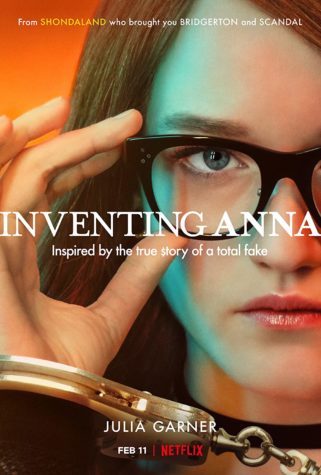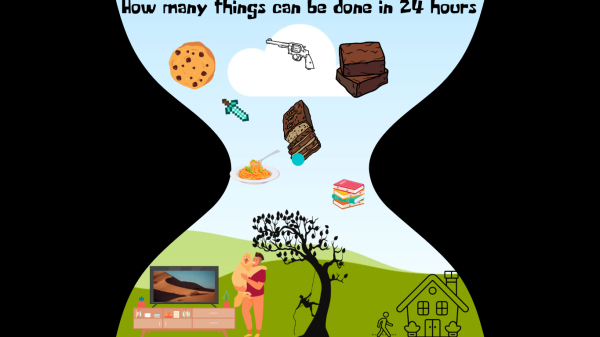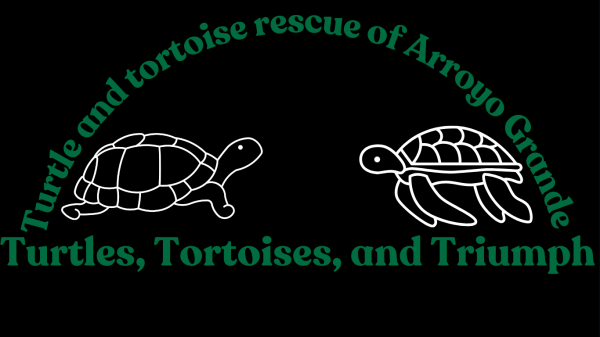Inventing Anna’s Rachel Williams: Victim or Victorious Profiteer
March 16, 2022
“Inventing Anna” is a show based on Anna Delvey, the 25-year-old con artist who fooled New York’s greatest. The Russian-born, German-accented fraudster came to America claiming she had a 67 million dollar trust fund overseas, and New York, being so well accustomed to hosting multi-millionaires, didn’t bat an eye. Anna got by not on luck, but with undeniable charisma. She knew the right things to say, the right things to wear, and how to act. New York fell in love with her. Big names all around the city wrapped around her flawlessly manicured fingers, making promises to help her dream come true. The Anna Delvey Foundation was an elite private art club for New York’s finest. Her chosen venue for her elite art club was the Church Missions House New York, the only venue luxurious enough to fit with her vision, The Anna Delvy Foundation, a dramatic venue already deeply rooted in the city. If she got this venue, she would become a permanent name in the city. She would belong in New York amongst the elite. Her plan should have worked. It was simple: build connections, secure a $40 million loan, pay everyone back, live her dream. She nearly pulled it off.

The show’s producer, Shonda Rhimes, follows Anna’s journey to achieve her dreams and her subsequent fall from grace. The show draws its viewers in and keeps them there. Each hour-long episode flies by due to Anna’s fast-paced lifestyle. The lies in this story are not just Anna’s, as the show is a fabricated half-truth in itself. The disclaimer that comes at the start of each show might be the only complete fact: “This whole story is completely true, except for all the parts that are totally made up.” The disclaimer is playful but also hints at Anna’s mendacious lifestyle.
Anna Sorokin, the real identity behind Anna Delvey, was actually a paid consultant on the series, giving Netflix her life rights for $320,000. In a BBC interview, she admitted that crime did pay off for her.
She clarified her statement by saying, “I didn’t say that crime pays in general.” Spoken like a true former grand larceny convict. She claims she had full intent on reimbursing her victims when her foundation took off. “In my head any money I would borrow, they would be getting back.”
After being sentenced for theft of services, grand larceny, and attempted grand larceny in 2019, she received 4-12 years in prison for failing to pay off her over a quarter of a million bill. Released in February of 2021, Anna got a taste of freedom. She received considerable media attention and took right back to Instagram, showing off her extravagant lifestyle, and how nothing had changed.
Anna’s life was a mix of facts and fiction. “Inventing Anna” presents them the same way. Each episode follows one lie, one falsified relationship between Anna and her friends or colleagues. Each lie leads to a fresh one, regrown like a new layer of skin. The season slowly shaves away each carefully laid out deception, leaving the audience craving to finally get to the real Anna; who she was before she reinvented herself. Anna wore her lies beautifully, but lying is never victimless and Anna was no exception. She was remorseless to gain her success, even her friends became victims of her lies.
Rachel DeLoache Williams’s character has been the most controversial portrayal in this entire series. It’s no secret that “Inventing Anna” portrayed Anna (Delvy) Sorokin as a sympathetic character to admire and praise. The badass entrances, the witty one-liners, all add to Anna’s main character “boss lady” energy. Shonda Rhimes (producer) turned this criminal into an icon who became the puppeteer of some of the biggest names of Wall Street. Rachel Williams is painted as weak and ditzy. Our first meeting of her is through Neff’s storyline (Anna’s loyal and honest to a fault friend) and we are left with the distinct impression that William was only interested in Anna for her ability to “make it rain.” She excitedly goes to Morocco with Anna and her friends to party it up. They stay at a luxurious hotel where other big names, such as the Kardashians, have vacationed. Without a care in the world, she wines, dines, and repeats to her heart’s content until she is stuck with a $62,000 bill because Anna’s card doesn’t work in foreign countries. She is blissfully unaware that her “rich friend” is actually dead broke with expensive taste. When they get home, Anna still finds excuses not to pay Williams back. She couldn’t. When the truth about her funds came out, cold harsh reality set in, and the fear became real. There was no hope for a wire transfer, there was no money coming.

Rachel Williams was $62,000 in debt and made sure the world was aware of her struggles with her con artist of a friend. Williams, the character Rachel is based on, released her own book on the actions; “My Friend Anna: The True Story of a Fake Heiress” quickly became a New York Times bestseller published in 2019 around the same time of Anna’s trial and conviction.
In an interview with Vanity Fair, Willams suggested that “Inventing Anna” was Sorakin’s final ploy to gain back the public’s favor. “Having had a front-row seat to [the Anna circus] for far too long, I’ve studied the way a con works more than anybody needs to. You watch the spectacle, but you’re not paying attention to what’s being marketed.” On February 5th she wrote an accusatory AirMail Essay calling out Netflix for, “…putting out a fictional story. It’s effectively running a con woman’s P.R.—and putting money in her pocket.” Williams is determined to make sure her side of the story is told.
The playful slogan at the beginning of each episode is particularly triggering for Williams. “I think it’s worth exploring at what point a half-truth is more dangerous than a lie. That disclaimer gives the show enough credibility so that people can believe [the fictional elements] more easily. I think that’s really dangerous territory.”
Williams, despite publicly complaining about the way her character is portrayed, says going on record to tell her side of the story and correct the show’s portrayal will just be “feeding into the picking-sides-ism” and says that her voice will be “lost if not more of a distraction.”
Not going on record does not mean total silence. Williams has been far from quiet on her views on Netflix and viewers’ apparent love of Anna Sorokin.
Williams complains how Anna never got rightly punished for her crimes and that it’s Netflix’s fault. She writes in an AirMail essay about Inventing Anna, “Because of Netflix, Anna emerged from behind bars financially net positive, with legions of followers and a level of notoriety from which she’ll presumably continue to profit.” Williams is angered by the fact that Anna profited off of her crimes and was made into a celebrity. One thing the show portrays accurately is how Willaims did profit from Anna’s story. She wrote a New York Times bestseller and became famous. Her credit company forgave her $62,000 debt. The world knows her name. She says she’s portrayed inaccurately in “Inventing Anna,” but we should acknowledge the information given for her character is from a girl who is in jail because her ex-friend helped capture her by working with the police in a sting operation.
Despite the behind-the-scenes drama, “Inventing Anna” is an entertaining show with an iconic main character. You’ll either love her or hate her but either way, it’s absolutely worth a watch.









